
A TRIP TO THE CEMETERY. A walking tour along the quiet and narrow streets of the Manila Chinese Cemetery is like listening to stories retold by the decorated tombs, elaborate mausoleums, and intricately-carved memorial sculptures. Aside from being a morbid-curiosity tour that one would usually expect when exploring old graveyards, touring the Manila Chinese Cemetery is also a cultural, historical and an architectural tour.
Being an active burial ground since the Spanish times, the cemetery has been transformed into a city-like landscape with architectural structures representing styles from the19th century revivalist to the pre-war art deco movement to modern and contemporary design-themes.
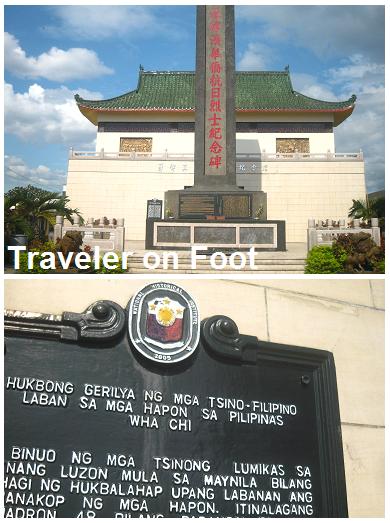
HISTORY IN THE CEMETERY. In addtion to the various architectural styles represented in tombs and mausoleums, this cultural landmark in Manila also offers history lessons about tragedy and heroism that are remembered in the several monuments and historical markers dedicated to war and calamity victims and heroes.

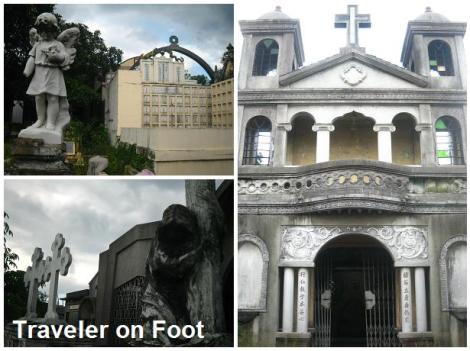
CHINESE CEMETERY. The Manila Chinese Cemetery is the second oldest cemetery in Manila. Historically, it was designated as the graveyard for the Chinese who were denied burial in Catholic cemeteries during the Spanish period.
Together with a much older cemetery, the Campo Santo de La Loma and the largest burial ground in Metro Manila, the Cementerio del Norte, it occupies the northeastern section of the cemetery complex in Paang Bundok or La Loma hill.

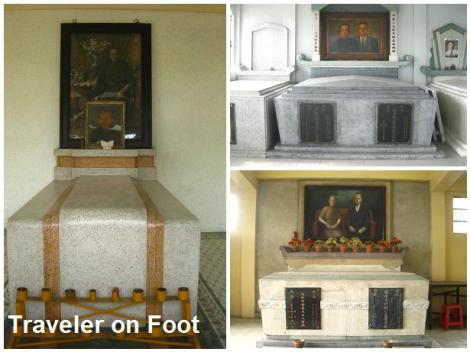
SPARED FROM WAR. Maybe it’s superstition (bad omen will come to those who desecrate graves) that kept the Manila Chinese Cemetery intact for centuries. Even during World War II, the cemetery has been spared from the bombings while the rest of Manila was destroyed.
This favorable fate gave the succeeding generations the chance to see authentic architecture from the different periods in history.
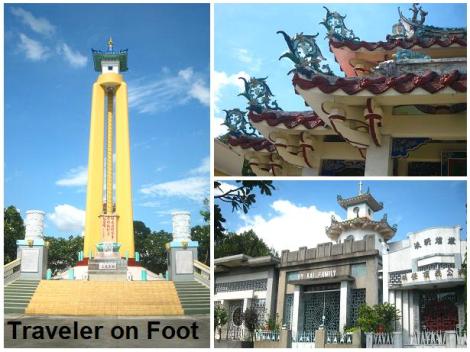
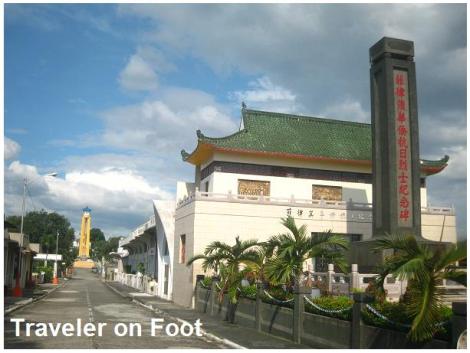
MILLONAIRE’S ROW. For touring purposes, areas in the cemetery have been fittingly identified as Little Beverly Hills, Millionaire’s Row, etc. because it’s here where one can purchase the most expensive piece of real estate in the country.


CHONG HOCK TONG TEMPLE. Most guided tours start at the Chong Hock Tong Temple. Established in the 1850s, the impressive structure contains huge Taoist deities in gold leaf.
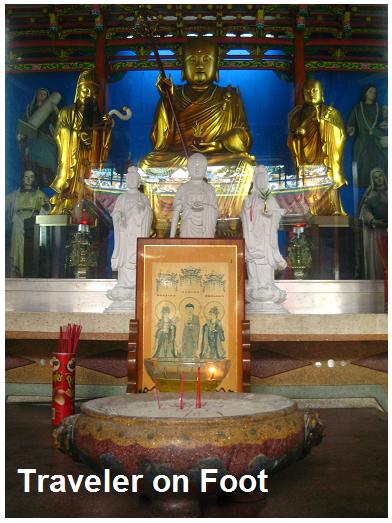
OLDEST CHINESE TEMPLE. But upon closer look, we noticed images of Catholic saints standing behind the oriental gods -a happy blending of faith in the country’s oldest Chinese temple.

RUBY TOWER MEMORIAL. Along the same road are more monuments and shrines like the Ruby Tower Memorial. The tower-like structure is dedicated to the more than two hundred Filipino-Chinese family members who died when the six-storey Ruby Tower collapsed during the earthquake that hit Manila on August 2, 1968.
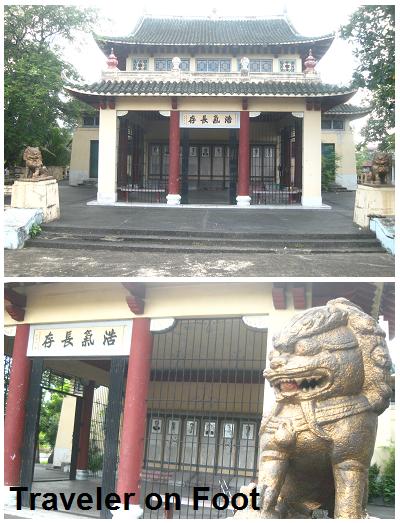
MARTYR’S HALL. A few walks from the Chong Hock Tong Temple is the Martyrs’ Hall. The shrine was built in the 1950s to remember the 10 Chinese community leaders who were executed by the Japanese in beginning of World War II.
The Japanese army did several executions in the cemetery ground during World War II. Writer Rafael Roces and Girl Scout organizer Josefa Llanes Escoda where executed in the cemetery grounds.

EPILOGUE. A mausoleum dedicated to Sy Sian Teng who together with his entire family were captured by the Japanese on January 23, 1945. They were never seen alive again.
On February 12, 1945, his friends and house helpers, were massacred by the Japanese army at 161 Balagtas Street, Malate, Manila. Inscribed on a metal sheet by the post are the words let us forgive but never forget lest history repeat itself.
Hi, regarding the last part, I took a look at the final picture and observed the lapida’s cursive writing.
I think the lapida says “Sy Lian Teng”, not Sy Sian Teng.
And I think the Sy Lian Teng in the picture is the same person as Roberto Sylianteng, who previously ran Berg’s at the Pedro-Samanillo (First United) Building, and who lost his entire family in 12 February 1945, same with the above massacre.
And searching at Google, some pictures from the museum at Escolta match those at the mausoleum: specifically his children.
The current Sylianteng’s descend from Roberto’s 2nd wife.
I stand corrected, the elder Sy Lian Teng didn’t adopt any English name.
From the items in the Sylianteng museum (uploaded by User:Judgefloro in Wikimedia Commons):
1. Here’s the composition of the Sylianteng Mausoleum:
-Sy Hua San (Sy Lian Teng’s brother who was an active anti-Japanese guerilla and was killed off first)
-Li Siok Keng (Sy Lian Teng’s 1st wife, who was then pregnant with their 10th child)
-the 8 Sy children
-2 Spanish helpers, & their families
-1 Filipino helper, & their family
-Emerenciana Antonio Soyangco (Sy Lian Teng’s 2nd wife, who predeceased her husband by 2 years)
2. Sy Lian Teng relates to a retreat letter to his grandson that his entire San Juan household was massacred via arson.
3. Sy Lian Teng’s descendants have 2 branches:
-Sy branch (from his eldest son by his 1st wife, who had accompanied his father into hiding and wasn’t at San Juan)
-Sylianteng branch (from his 4 children by his 2nd wife)
Hi Glenn. Congratulations on an excellent blog. We lived in the Philippines from 1971 until 1989, so I’ve enjoyed looking at your photos and reading your posts.
I’m planning to write a post on my blog on Nov. 3 about the Manila Chinese Cemetery. My great-grandfather-in-law was the primary founder of the cemetery. His name was Tan Quien Sien (although it’s been spelled many different ways). My problem is, it’s been years since I visited the cemetery, and I don’t think I took any photos. Would you allow me to use a couple of your photos? If you would, I would name you as the photographer and set up a link to this page.
Not a problem Chen. Grab what you need. -Glenn
Thank you.
oh so you’re distantly descended/related from Don Carlos Palanca himself?
and yes, he actually used 3 names:
-Tan Quien Sen (陳謙善)
-Tan Chuey Leong/Liong (陳最良)
-Tan Chueco (陳最哥) – his son, who became the 1st Chinese ambassador, inherited the “Tanchueco” surname
[…] as well to Traveler on Foot, Lakwatsero, as well as this site about Chinese funeral […]
nice! creepy pero mahilig ako sa mga sementeryo.
Wow TOF! What a beautiful, ornate well-preserved cemetery. A much larger one than the one in Cebu. That’s a surprise to me that historically the Chinese were not allowed to be buried in the Catholic cemeteries. I was always under the impression that it was by choice that they were buried in their own cemetery. I wouldn”t mind “living” in many of those beautiful mausoleums! A peaceful place to be buried though..
I like the way that the Catholic saints are in the background at the temple–that “blending” that is evident in Binondo too.
There was this love-hate relationship between the Spaniards and the Chinese during the colonial period. They do not trust each other but theyv’e tolerated each others presence in the Philippines queeniebee.
Owning a mausoleums at the Manila Chinese Cemetery is like owning real estate in an exclusive villages in Makati and Alabang. We’ve learn that lot prices in the cemetery are comparable to exclusive subdivisions.
Not “buried”– I guess the correct word would be “entombed”…
another timely post! i felt a chill reading about the execution of the chinese family… so i am wryly amused at how the japanese have conquered us with their cars and their anime.
It was tragic story mojacko. I pray for this not to happen again.